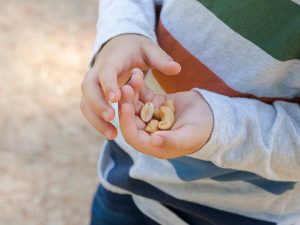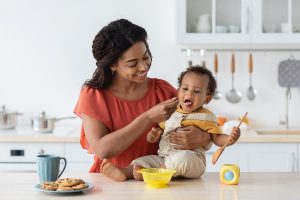Kids and teens are struggling with their mental health in America, and one new report suggests the overinvolvement of parents may be partly to blame.
Kids don’t get to roam any more. They’ve lost time for free play and risk-taking amid parents’ fears about the dangers of the world, said report co-author David Bjorklund.
While people think the lack of independence and the growth in mental health issues is new, it’s been a lot more gradual, said Bjorklund, a professor in the psychology department at Florida Atlantic University College of Science, in Boca Raton.
“It’s not a really new phenomenon. It’s a growing one. And it’s been growing for decades,” Bjorklund said. The trend emerged in the 1960s and really accelerated in the 1980s, the authors said. Some eventually dubbed the trend “helicopter parenting.”
Adults were well-intentioned in wanting to protect children, according to the paper, but this has deprived kids of the independence they need for mental health. And now young people are experiencing high levels of anxiety, depression and suicidal ideation.
In 2021, the American Academy of Pediatrics, the American Academy of Child and Adolescent Psychiatry, and the Children’s Hospital Association issued a joint statement to the White House that child and adolescent mental health be declared a “national emergency.”
Last month, the U.S. Centers of Disease Control and Prevention reported on the results of a 2021 survey that found 57% of teen girls felt persistently sad or hopeless. Those numbers are double the number of teen boys experiencing sadness or hopelessness.
School pressures play a role
Too much schoolwork is a part of this mental health decline, according to the article published online recently in the Journal of Pediatrics. The school year increased by an average of five weeks between 1950 and 2010, and homework is common, even for small kids.
Recess, meanwhile, averaged just 26.9 minutes in a school day in 2014, the authors said.
Yet another challenge to a youngster’s mental health: intense pressure to achieve at an early age, especially in middle-class families planning on college, Bjorklund said.
Having opportunities for independent play, self-directed activities, and being able to contribute to their families helps children feel trusted, responsible and capable, Bjorklund said.
“Play is important, and that’s the concept that some people find hard to believe,” Bjorklund said.
Play is, by definition, not serious, he said. Yet scholars who study play believe it “plays a really important part in children’s healthy development, social development, mental development, emotional development. It’s been taken for granted for too long,” Bjorklund said.
From play and independence, children gain a sense of autonomy, a feeling that what they do makes a difference, Bjorklund said.
It also gives them a feeling of competency.
“We’re all better off if we have a sense that we are important agents in our own lives, that we’re competent, at least at some things,” Bjorklund said.
The importance of play
The need for more opportunities for unstructured play is just one of many different issues likely affecting children’s mental health, said Jill Emanuele, vice president of clinical training for the Child Mind Institute in New York City. Emanuele was not involved in this commentary.
Emanuele also made a distinction between play time and spending downtime on screens.
“It’s a crucial part of children’s development. They learn cognitive skills, social skills, linguistic skills, physical skills. They learn risk-taking. They learn social skills, how to interact with other kids and also self-regulation and management. They learn how to be creative. They learn how to imagine,” Emanuele said of play time. “That independent way that they can build their world and build all these skills is so very important.”
In terms of risk-taking, Emanuele uses the metaphor of teaching kids to ride a bike, that eventually, you have to take your hand off the bike and let them ride or fall.
From her own observations, Emanuele said, “parents are much less willing to let their hands off the bike. And some kids aren’t really being able to fall and learn for themselves, have that experience, be able to deal with failure.”
Perhaps parents need to be taught to encourage more independence in their kids and to maintain healthy boundaries while allowing some independence in play, Emanuele said.
Bjorklund said the first step in trying to solve the issues raised in the study is acknowledging the need.
Parents could work together with a few other parents to give their kids more independence to walk to the store together or even to play in one child’s yard and bring in the adults in case of emergency, he said.
Parents could also petition schools to restore longer recess.
Among the types of risky play that the authors noted is climbing high into a tree. This helps protect kids from developing phobias, according to the report, and it reduces anxiety by boosting self-confidence in dealing with emergencies.
It’s an issue that requires balance. Of course, parents need to not be irresponsible and to keep kids safe, Bjorklund said, noting they need to temper that with opportunities to help children be independent.
“Risk is cost and benefit. And when we take risks and we succeed, there’s often great benefit,” Bjorklund said. “We want to moderate the risks, of course, for our children. But we don’t want to prevent them from engaging in it.”
More information
The American Academy of Pediatrics has more on children’s mental health.
SOURCES: David Bjorklund, professor, department of psychology, Schmidt College of Science, Florida Atlantic University, Boca Raton, Fla.; Jill Emanuele, PhD, vice president, clinical training, Child Mind Institute, New York City; Journal of Pediatrics, Feb. 23, 2023, online
Source: HealthDay
Copyright © 2025 HealthDay. All rights reserved.

















